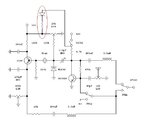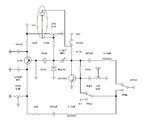neazoi
Advanced Member level 6
Hi, I am trying to transform a simple RX into a transceiver and I am playing around with the frequency offset mechanism. **broken link removed**
I have tested this mechanism and it works. I have explained of how I think it works in the last paragraph in this page.
Is my explanation correct?
The "the variable capacitor is connected "closer" to the ground through the (now switched on) BC549C transistor" is not a very good explanation.
Any corrections?
I have tested this mechanism and it works. I have explained of how I think it works in the last paragraph in this page.
Is my explanation correct?
The "the variable capacitor is connected "closer" to the ground through the (now switched on) BC549C transistor" is not a very good explanation.
Any corrections?

